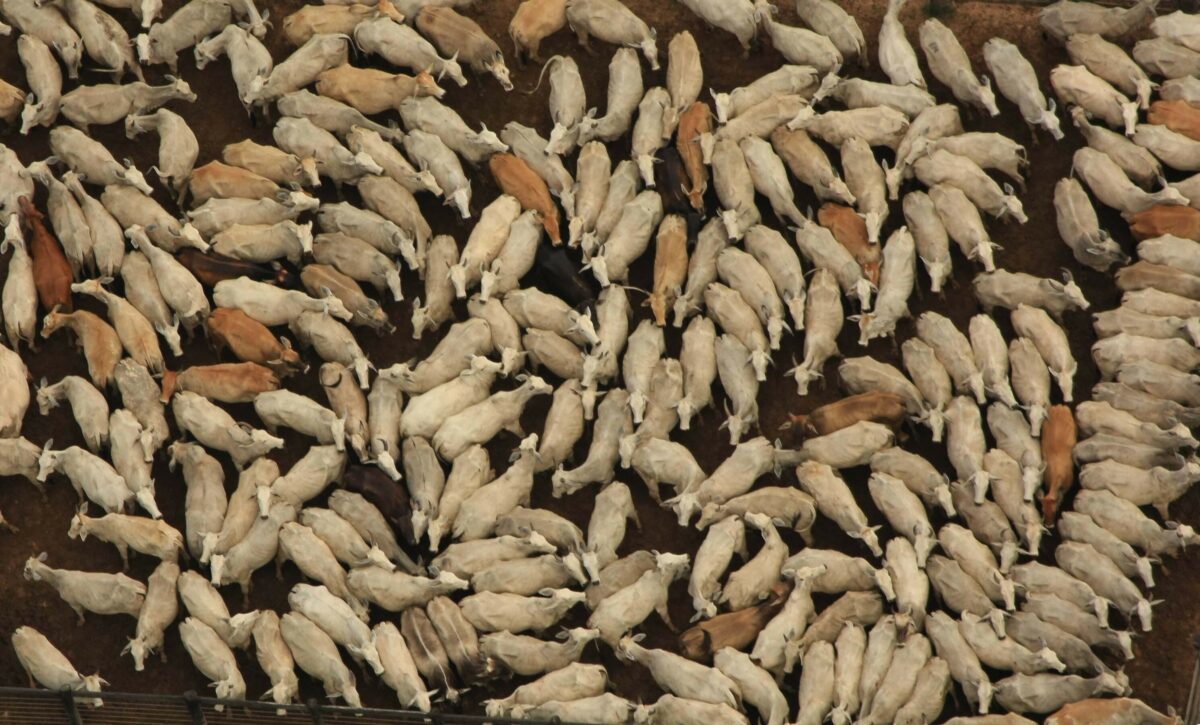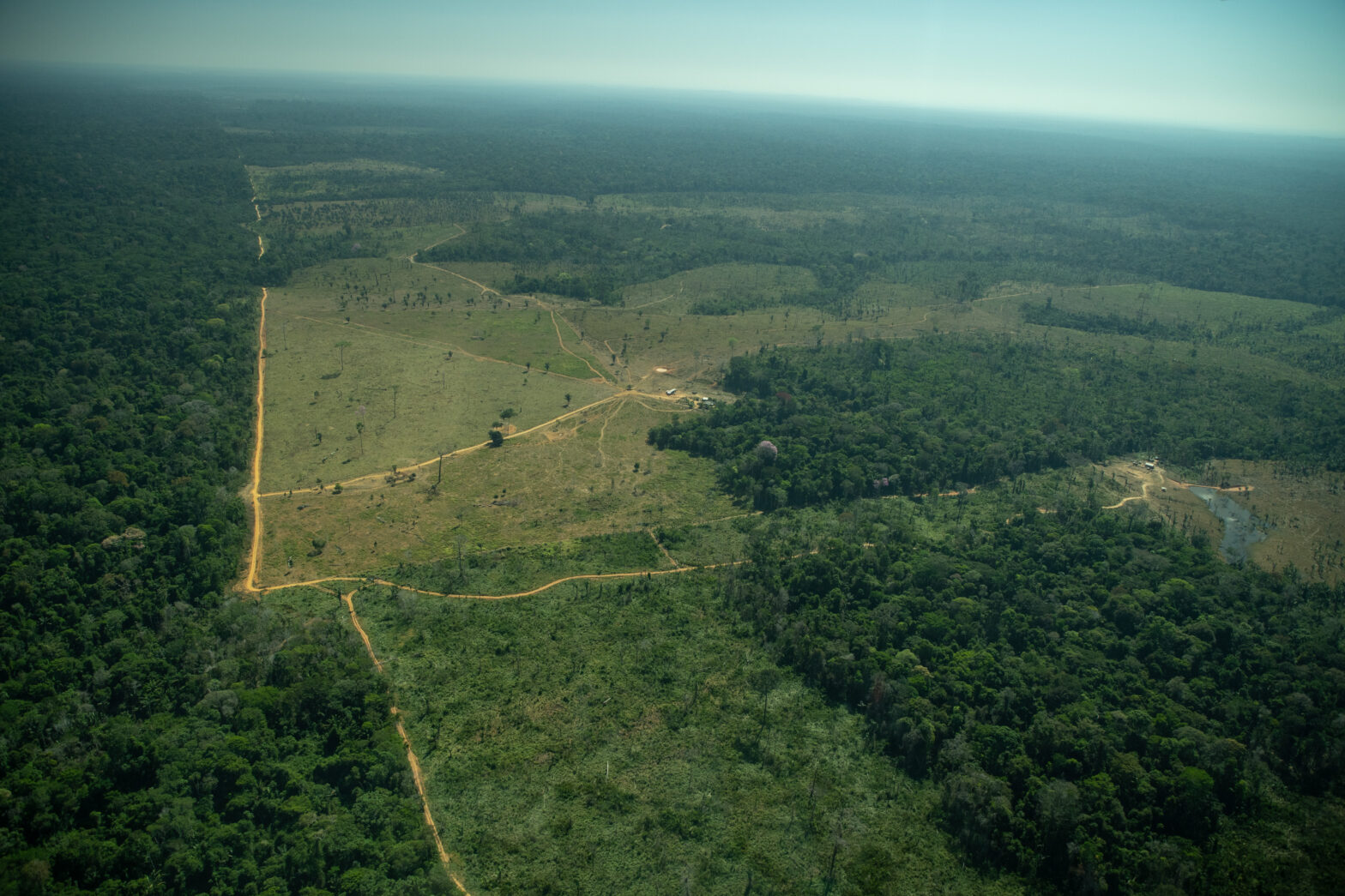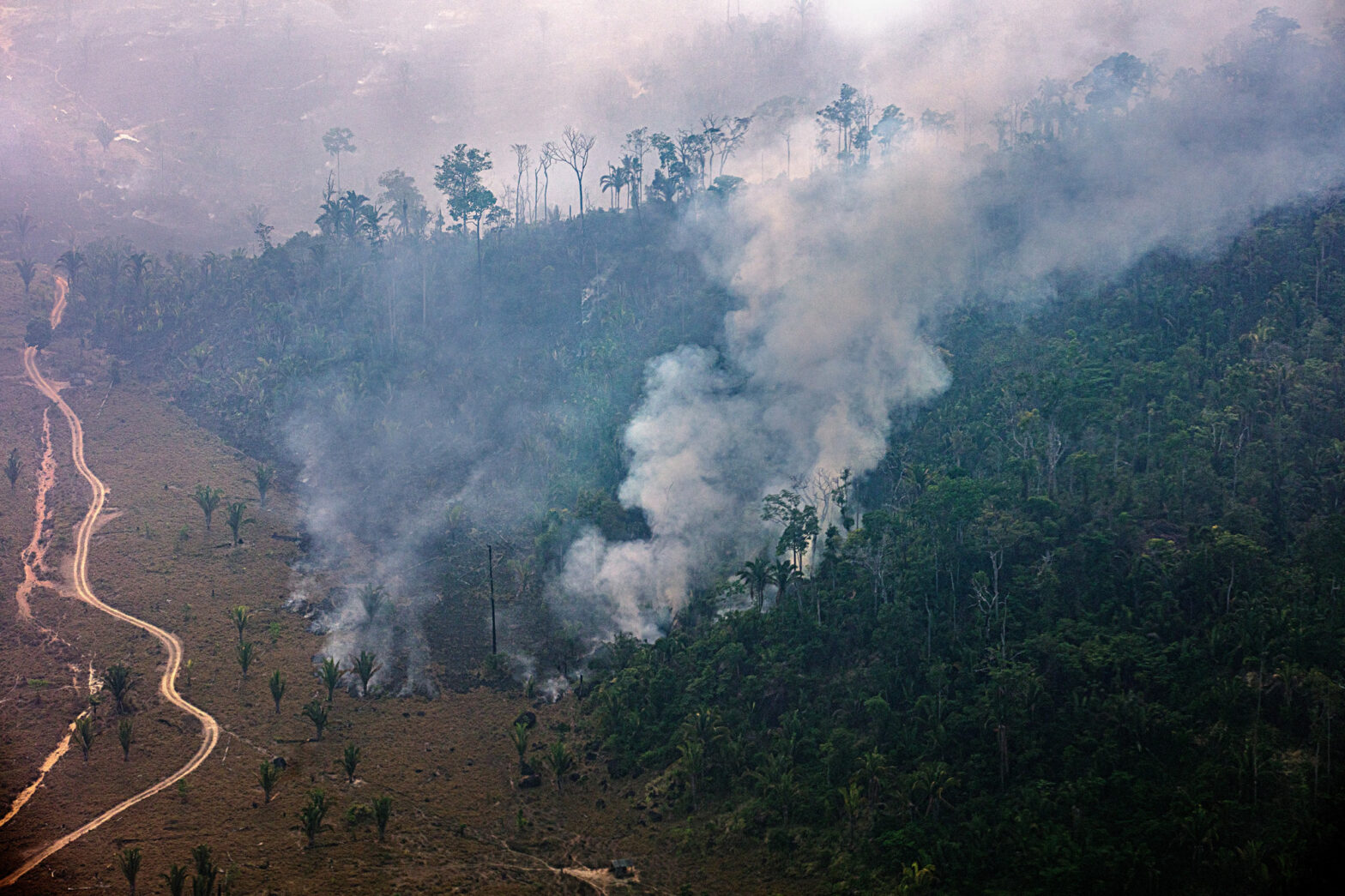The regional herd has grown by almost 1000% since the 1970s and today represents over 40% of the total national amount. Brazil signed a commitment to reduce 30% of its greenhouse gas emissions by the end of the decade and will have to review its cattle husbandry practice in forest areas.
The cattle herd in the Legal Amazon grew 20 times more than the rest of the country’s average. Since 1974, when the IBGE began monitoring cattle herds, it has increased by 984% in municipalities in the Amazon states, while it has grown by 49% in other Brazilian cities. This reality challenges the agreement signed by Brazil and another hundred countries at COP26 to reduce methane emissions by the end of the decade. Livestock in the country is the biggest source of the potent greenhouse gas, a major source of global warming.
IBGE data analyzed by InfoAmazonia show that the current herd totals 218 million heads of cattle in the country, more than the 213 million Brazilians. In the Legal Amazon, the herd skyrocketed from 8.5 million in 1974 to 93 million animals in 2020, representing nearly 43% of the national herd.
Between 2004 and 2020, the herd increased 30% in the Legal Amazon, while in other regions of Brazil it shrank by 6%. In these two decades, the Brazilian Amazon lost 197,000 km² of forests, an area equivalent to that of the state of Paraná, mainly due to pressure for increasing pastures.
According to the IBGE, the states with the most oxen in the country are Mato Grosso, with 32.7 million heads, followed by Goiás, with 23.6 million, and Pará, with 22.3 million. The municipalities of São Félix do Xingu and Marabá, in the state of Pará, are the first and third largest national herds, totaling 3.7 million heads. The second post is in Corumbá (MS), with 1.8 million animals.
The herd’s concentration in the Amazon results from political and economic incentives for agriculture created since the military dictatorship, says economist André Cutrim, from the Post-Graduate Program in Natural Resource Management and Local Development in the Amazon at the Federal University of Pará (UFPA): "The tax incentive policy has become the main source of financing for deforestation, encouraging pasture expansion and cattle raising in the vast territories of the Amazon".
According to Cutrim, the model combined vast tracts of land and low operating costs to “occupy rather than give up” [the Amazon to foreign powers], a motto of the military regime. "Extensive beef cattle raising occupies large areas, reproducing the concentrated model of land tenure on the frontier, with low occupation cost not only because of the low price of land but also because the investment cost of implementing agricultural projects were subsidized by financial and tax incentives directed especially at large companies from the South and Southeast regions of Brazil that came to the Amazon”, he explained.
Increased productivity
The sheer amount of cattle that make the country the world's largest exporter of meat increases the challenge of cutting methane emissions. Brazil and other countries agreed to reduce climate pollutant emissions by 30% by 2030 during the United Nations Conference on Climate Change (COP26) in Glasgow, Scotland. According to the Climate Observatory, bovine methane emissions account for 17% of the country's total greenhouse gas emissions.
Carbon dioxide and methane are the two main pollutants that contribute to global warming. Methane is emitted by cows' digestive gases - that is, their farts and burps. Other sources include decomposing materials in landfills and nitrogen fertilizers. “The effects of reducing methane emissions on global warming could be seen in a shorter period of time. While carbon dioxide takes thousands of years to dissolve in the atmosphere, methane takes only 11 years," highlighted physicist Paulo Artaxo, a professor at the USP Physics Institute and member of the UN's Intergovernmental Panel on Climate Change(IPCC), in an interview with BrazilClimateHub.
According to the director of Science at the Amazon Environmental Research Institute (IPAM), Ane Alencar, cutting methane emissions involves consolidating economies other than livestock in the Amazon, such as the bioeconomy and the use of preserved forests. A study by the NGO shows that pastures occupy 75% of the deforested area on public land in the Amazon. “The main cancer of deforestation in the country is the destruction of public forests not intended for the formation of pastures. We have returned to the double-digit level of deforestation in the last two years in the Amazon, the region where national agriculture is growing the most”, highlighted the geographer.
Pará's governor, Helder Barbalho, believes that investing in technical assistance, innovation, and technology will increase cattle productivity in currently deforested areas in the Amazon. The state maintains on average less than one ox per hectare and is the only one in the region that monitors its livestock production chain. “Without inspection or only inspection against environmental crimes, we will not make progress in cutting emissions. We can triple livestock production in Pará and other regions without cutting down a single tree in the Amazon. The region's governors are committed to this goal”, he highlighted.
The main cancer of deforestation in the country is the destruction of public forests not intended for the formation of pastures. We have returned to the double-digit level of deforestation in the last two years in the Amazon, the region where national agriculture is growing the most
Ane Alencar, director of IPAM
Studies by the Amazon Institute of Man and Environment (Imazon) show that, without real improvements in productivity, up to 1 million hectares could be deforested per year in the Amazon by 2030 to supply the domestic and global meat markets. “Studies by Embrapa show that improving the quality of pastures can reduce methane emissions by 20% and even capture carbon. In addition, adding seaweed to the diet of herds, for instance, can reduce methane emissions by up to 80%”, highlighted Artaxo.
Mato Grosso already has an ongoing plan to meet the challenge. The Produce, Conserve, and Include (PCI) initiative wants to reduce greenhouse gas emissions from livestock by using inspection, production of more grains, meat, and wood in degraded or deforested areas, preservation and recovery of native vegetation, greater participation of family farming in the internal market, and the elimination of illegal deforestation.
The Ministries of the Environment and Agriculture did not respond to requests for an interview and did not say how Brazil will cut methane emissions by the end of the decade. The Ministry of the Environment sent a note commenting that actions such as the National Solid Waste Policy and the ABC+ Plan will contribute to meeting the targets, which were integrated with national commitments to reduce greenhouse gases. In October, Brazil criticized the IPCC report's recommendations aimed at reducing world consumption of meat and expanding vegetable products to reduce deforestation and contain the climate crisis. The document is one of the the main references for the debates held at COP26.
Without detailing the route to cut methane emissions, the vice president and coordinator of the Legal Amazon Council, Hamilton Mourão, told the press that national livestock will have to adapt to meet the target for a 30% reduction in emissions before 2030. "The methane issue is linked to livestock excrement. We have a huge cattle herd, so there will have to be an adaptation, some planning for that. We have the know-how, it's just a matter of getting everyone to adapt and mitigate. There are resources totaling around 12 billion dollars to help countries in this process," he said. The resources cited by the vice president are from an international fund announced at COP26 with US$ 12 billion in public and private resources to support actions against deforestation and for the conservation of forests, in addition to fostering global trade in deforestation-free agricultural products.
Story by InfoAmazonia for the PlenaMata project.





